Welcome to an in-depth exploration of the E maj7 chord, a rich and sonorous chord that will add a touch of elegance to your guitar playing. As part of the major seventh chord family, the E maj7 is built from four distinct notes: E, G#, B, and D#. These notes, when stacked together, create a chord with intervals of a Root (1), Major Third (3), Perfect Fifth (5), and Major Seventh (7). If you’re already familiar with basic guitar chords and are eager to expand your harmonic palette, understanding and mastering the E maj7 is a fantastic next step.
Before we delve into finger positions and diagrams, grasping the theory behind chord construction will significantly enhance your learning experience. Understanding how chords are formed from intervals allows you to not only memorize shapes but also to truly comprehend the sonic architecture of the E maj7 and other chords. This knowledge unlocks creativity and makes learning new chords much more intuitive.
In this guide, we’ll provide you with comprehensive chord diagrams and fretboard patterns to visualize and play the E maj7 chord in various positions. We will also touch upon how inverting intervals can lead to different voicings and sonic textures of this beautiful chord. While the E maj7 might seem a bit more complex than fundamental beginner chords, don’t be discouraged. With focused practice, you’ll find it’s readily accessible and incredibly rewarding to incorporate into your playing and common chord progressions.
Ready to enrich your guitar vocabulary? Let’s immerse ourselves in the world of the E maj7 chord and discover its potential.
Deconstructing the E Maj7 Chord: Notes and Formula
The E maj7 chord is composed of the following notes:
- E – Root (1)
- G# – Major Third (3)
- B – Perfect Fifth (5)
- D# – Major Seventh (7)
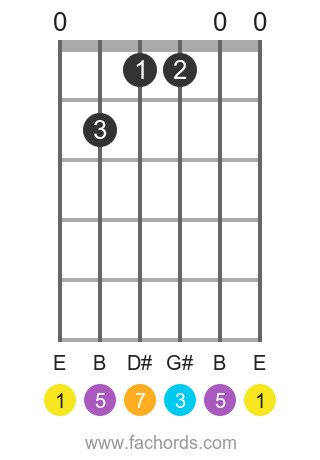 E maj7 position 1 guitar chord diagram
E maj7 position 1 guitar chord diagram
The formula for any Major Seventh chord, including E maj7, is defined by these intervals from the root: 1, 3, 5, and 7. This formula distinguishes major seventh chords from dominant seventh chords (which have a b7) and minor seventh chords (which have a b3 and b7). The major seventh interval (7) is what gives the E maj7 chord its characteristically jazzy and sophisticated sound.
E Maj7 Chord Positions: Diagrams and Shapes
Below, you’ll find a variety of E maj7 chord positions presented with chord diagrams. These are ordered generally from easier to more challenging shapes. If you are new to reading chord diagrams, be sure to check out our guide on how to read chord diagrams. For those encountering difficulty with barre chords, our Bar Chords Tips tutorial offers valuable techniques and exercises. For a text-based representation of these chords, you can also visit our accessible chords page.
Position 1: Open Position
This is often the first position many guitarists learn for the E maj7 chord. It’s an open voicing that provides a bright and full sound.
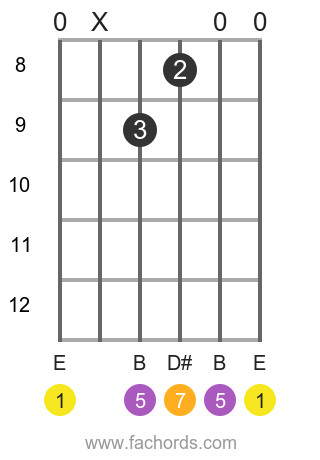 E maj7 position 5 guitar chord diagram
E maj7 position 5 guitar chord diagram
Position 2: Movable Shape
This barre chord shape is movable, meaning you can play a maj7 chord with any root by shifting this shape up and down the neck.
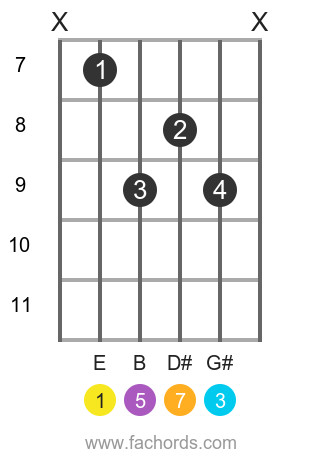 E maj7 position 4 guitar chord diagram
E maj7 position 4 guitar chord diagram
Position 3: Open Voicing
Another open position voicing, this shape offers a slightly different tonal color compared to Position 1.
 E maj7 position 1 guitar chord diagram
E maj7 position 1 guitar chord diagram
Position 4: Open String Variation
This position utilizes open strings to create a lush and resonant E maj7 sound.
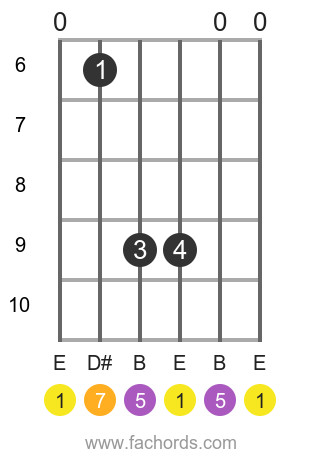 E maj7 position 6 guitar chord diagram
E maj7 position 6 guitar chord diagram
Position 5: Barre Chord Shape (Movable)
Another essential movable barre chord shape for the E maj7, providing a different voicing and feel.
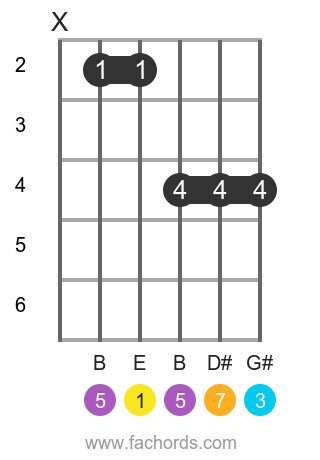 E maj7 position 7 guitar chord diagram
E maj7 position 7 guitar chord diagram
Position 6: Barre Chord Variation (Movable)
This barre chord shape is useful for smoothly transitioning from other barre chords in different musical contexts.
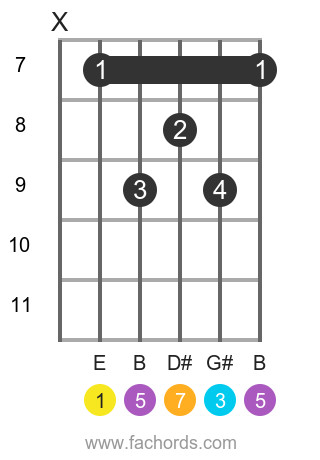 E maj7 position 8 guitar chord diagram
E maj7 position 8 guitar chord diagram
Position 7: Open Barre Hybrid
Combining open strings with a partial barre, this position creates a unique and rich E maj7 voicing.
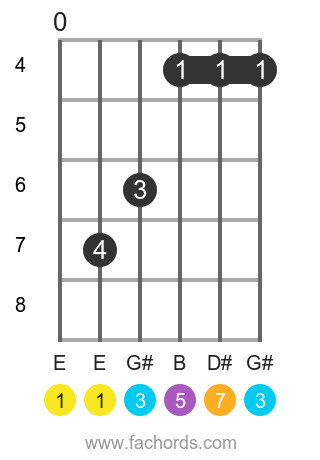 E maj7 position 2 guitar chord diagram
E maj7 position 2 guitar chord diagram
Position 8: Open Barre Variation
Similar to Position 7 but with a slightly different finger arrangement, offering yet another flavor of the E maj7 chord.
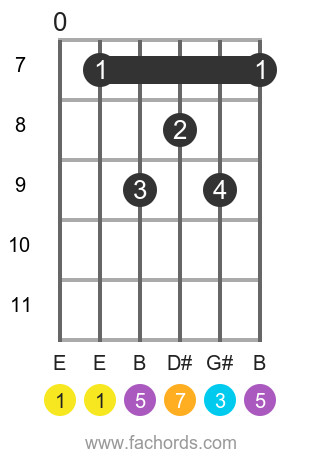 E maj7 position 3 guitar chord diagram
E maj7 position 3 guitar chord diagram
Explore our extensive all guitar chords library for even more chord shapes. For a handy printable resource, download our Free Guitar Chords Chart Pdf.
The E Maj7 and Fretboard Navigation
The fretboard map below illustrates the locations of the chord tones (1, 3, 5, 7) for the E maj7 chord across the guitar neck. By understanding this map, you can create your own E maj7 voicings and explore melodic possibilities within the chord.
[Fretboard Map Image – Consider generating a text-based fretboard map here if image generation is not possible, or describe how to visualize it]
This knowledge empowers you to play the E maj7 chord in any region of the neck, selecting chord tones to fit your musical needs.
E Maj7 in Musical Context
The E maj7 chord is a versatile chord that finds its home in various genres, particularly jazz, pop, R&B, and even some styles of rock. Its sophisticated and slightly jazzy quality makes it a great choice for adding color and depth to chord progressions.
You can find the E maj7 chord alongside other major seventh chords. Explore these related major 7th chords to expand your musical vocabulary: C maj7 | D maj7 | E maj7 | F maj7 | G maj7 | A maj7 | B maj7 | C#maj7 | D#maj7 | F#maj7 | G#maj7 | A#maj7 | Abmaj7 | Bbmaj7 | Dbmaj7 | Ebmaj7 | Gbmaj7.
In Conclusion
The E maj7 chord is more than just a shape on the fretboard; it’s a gateway to a richer harmonic understanding and more expressive guitar playing. By learning these various positions and understanding the underlying theory, you’ll be well-equipped to incorporate the E maj7 into your songs and improvisations. Keep practicing these shapes, experiment with different voicings, and listen to how this chord is used in your favorite music. Happy playing!

